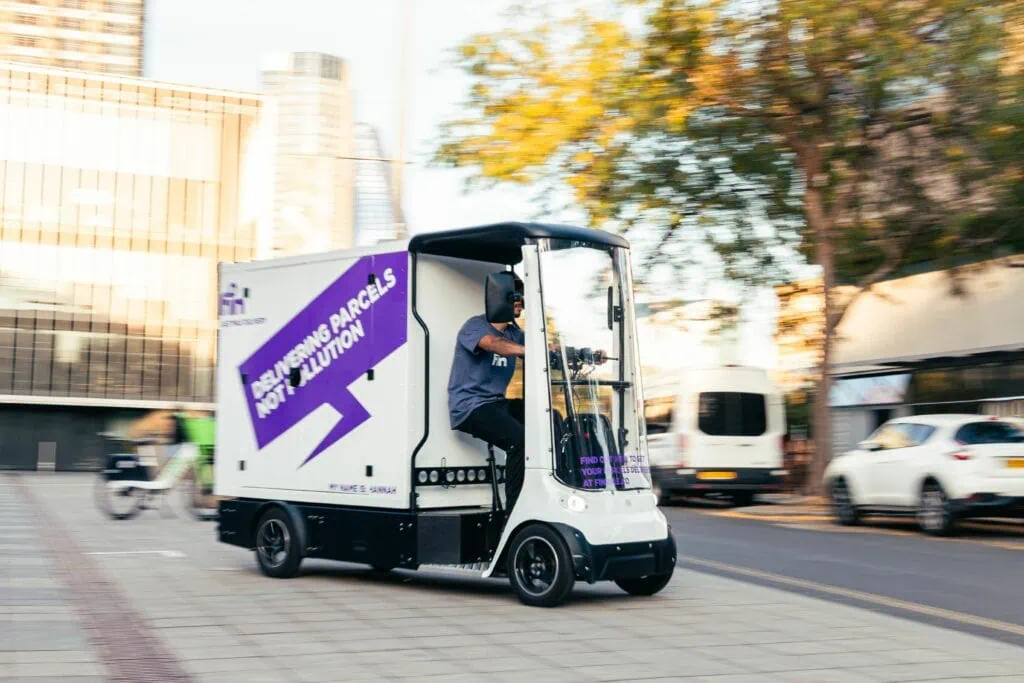
As peak season approaches, e-commerce businesses are gearing up for the excitement of Black Friday, Cyber Monday, and the Christmas rush. To turn these opportunities into a sales bonanza, it’s crucial to optimise the pre-purchase customer journey. Our 10-step checklist will guide you through enhancing every phase of this journey, from initial interest to final decision. Ready to make this peak season your most successful yet? Let’s get started.
This article is a collaboration between ILG and Oban International, a digital marketing agency that supports ILG with its international activities.
Table of contents:
- Localise your digital marketing strategy
- Optimise SEO for global reach
- Enhance user experience (UX)
- Create effective content
- Streamline the checkout process
- Address basket abandonment
- Use data and personalisation
- Strengthen pre-purchase communication
- Build trust and community
- Offer virtual try-on or AR experiences
1. Localise your digital marketing strategy
If your business spans multiple regions, a one-size-fits-all approach won’t cut it. Tailor your strategy to each market:
- Custom messaging: Customise your content and product offerings to reflect the cultural norms, holidays, and traditions of each market. Work with Local In-Market Experts to ensure your messaging resonates with each region’s audience. Use data to divide your audience by location and buying habits and create personalised ads that connect with your target customers.
- Platform-specific engagement: Tailor your content to the most popular digital platforms in each region. For example, in the US, where platforms like YouTube and TikTok dominate, create engaging short-form video content that capitalises on trends and viral potential. In contrast, in Japan, where X and LINE are influential, focus on concise, text-based updates and interactive content like polls and quizzes.
2. Optimise SEO for global reach
Boost your visibility with a globally-aware SEO strategy:
- Seasonal keywords: Target peak season keywords like “Black Friday deals,” “Cyber Monday sales,” and “Christmas gifts” to improve your ranking when customers are searching for deals.
- Localised keywords: Tailor your keyword research to each market’s language and context. For example, use “trainers” in the UK, “sneakers” in the US, and “runners” in Australia, to ensure contextual relevance.
- Multilingual SEO: Implement hreflang tags to direct users to the appropriate language version of your site. Customise meta titles and descriptions for each language to enhance click-through rates. Depending on how international your business is, consider other search engines relevant to specific regions, such as Baidu in China.
3. Enhance user experience (UX)
User experience really matters – according to research by PwC, 32% of consumers are willing to abandon a brand they like after experiencing just one negative interaction. Improve your site’s user experience and SEO with clear organisation, effective search functionality, responsive design, and fast load times:
- Landing pages: Design dedicated, visually appealing landing pages for peak-season promotions. Include clear calls-to-action and seasonal imagery.
- Website organisation and search functionality: Use clear categories and subcategories to help users find products easily. Implement a robust search feature with autocomplete and filters for criteria like price, size, or colour.
- Responsive design and fast load times: Mobile commerce sales are expected to account for 62% of all retail sales by 2027, and the UK ranks higher than any EU country for m-commerce.Optimise your site for mobile with a responsive design that adjusts to various screen sizes. Ensure fast load times by compressing images, minimising CSS, JavaScript, and HTML, and using Content Delivery Networks (CDNs) for global content distribution.
4. Create effective content
To engage your audience, capitalise on competitor gaps, and improve SEO, focus on content marketing. Here’s how:
- Seasonal content: Create blog posts, infographics, and videos about upcoming deals, gift guides, and holiday tips. Rich and varied content types that provide users with quick, comprehensive answers is important for SEO with Google’s rollout of AI Overviews. Share these across social media to attract attention and drive traffic.
- Educational and local content: Offer diverse educational content such as DIY tutorials, product comparisons, and industry insights. Tailor it to local interests – like sun protection tips for Australia or moisturising routines for Canada – and use various formats to match regional preferences.
- Product descriptions: Write clear and attractive descriptions for your products that focus on their key features and benefits. Use high-quality images that show the product in different settings or uses. Make sure your language is engaging and include relevant keywords to improve your search engine ranking, especially for Black Friday and Christmas promotions.
- Influencer collaborations: Where appropriate, partner with local influencers to promote your brand authentically. For example, a fitness brand might collaborate with a popular local fitness influencer to produce engaging workout content.
5. Streamline the checkout process
To enhance user experience and boost conversion, implement these best practices for your checkout process:
- Prominent checkout button: Make sure the checkout button is highly visible and accessible on all purchase-related pages. Use a bold, contrasting colour and place it consistently, like in the top right corner or as a floating button.
- Simplified steps: Streamline the checkout process by minimising steps. A single-page checkout where customers can enter all necessary details at once is ideal. Include a progress bar to indicate stages like “Shipping Information,” “Payment Details,” and “Review Order,” helping customers know where they are in the process.
- Flexible payment and delivery options: Payment preferences vary by market. That’s why it’s important to offer a range of payment methods, including digital wallets (e.g., PayPal, Apple Pay) and local systems where appropriate (e.g., Alipay). Provide multiple delivery choices, such as standard and express shipping, or click-and-collect, with clear communication of delivery times and costs.
6. Address basket abandonment
According to a report from GFS and Retail Economics, UK retailers are losing £34.4 billion annually to cart abandonment. To tackle this issue and improve the checkout experience, consider the following:
- Understand the causes: Limited delivery options, high shipping costs, and lengthy delivery times are key contributors to cart abandonment. You need to identify the issues so you can implement the right solutions.
- Offer free shipping: Encourage purchases by providing free shipping, especially for orders above a certain amount, to boost conversion rates and average order value.
- Communicate delivery deadlines: Clearly specify delivery times and deadlines, particularly during peak seasons, to manage customer expectations.
- Provide clear and valid coupons: Ensure that coupons and codes for free shipping, promotions, and discounts are easy to find and use.
- Enable autofill: Simplify the checkout process by auto-filling customer information, such as shipping addresses.
- Implement guest checkout: Allow customers to complete purchases without creating an account. This reduces friction and speeds up transactions, potentially increasing conversions. Encourage account creation post-purchase with incentives if desired.
7. Use data and personalisation
Use data and technology to enhance the customer experience by tailoring interactions and offerings to individual preferences:
- Behavioural analytics: Use advanced analytics tools like Google Analytics or Hotjar to understand customer behaviour on your site. Track metrics like time spent on pages, bounce rates, and shopping patterns to identify areas for improvement. Also, review last year’s analytics to pinpoint trends and areas for potential growth.
- Personalisation: Thanks to online pioneers like Amazon, personalisation has become a standard expectation for shoppers. Today, 80% of consumers are more likely to purchase from a company that provides tailored experiences. You can meet these expectations by offering personalised product recommendations, special offers, and discounts based on each customer’s browsing and purchase history.
- Competitor monitoring: Keep an eye on your competitors to stay informed about their strategies. Analyse their product offerings, marketing tactics, and customer engagement. Use this information to differentiate your brand and find opportunities to provide unique value.
8. Strengthen pre-purchase communication
Effective communication with potential customers before they purchase can help clarify doubts and encourage conversions:
- Live chat and chatbots: Provide instant support through live chat or AI-powered chatbots to quickly address common questions and guide customers. Around 73% of customers find live chat the most satisfying communication method, and 63% are more likely to return to websites offering this feature.
- Email and SMS campaigns: Use email and SMS marketing to engage potential customers with reminders about abandoned carts, special promotions, and exclusive offers. Ensure these communications are timely and relevant, personalised to each customer’s interests and behaviours.
- Create a sense of urgency: Incorporate time-limited offers and deadlines into your communications. Highlighting limited-time discounts or exclusive deals can motivate potential customers to act quickly, reducing the likelihood of them delaying their purchase or abandoning their cart.
9. Build trust and community
Building trust and a sense of community around your brand can strongly influence purchasing decisions:
- Trust signals: Use product ratings, reviews, media logos, and press mentions to enhance credibility. Display SSL certificates to show that your site is secure; these certificates encrypt data between the customer and your server, ensuring a safe shopping experience.
- User-generated content (UGC): Encourage customers to share their experiences and product photos on social media. Featuring UGC on your website provides genuine testimonials and boosts buyer confidence.
- Community engagement: Create a community around your brand by engaging with customers on social media and other platforms. Share seasonal content to build a sense of belonging and encourage purchases by showing others’ positive experiences.
10. Offer virtual try-on or AR experiences
Depending on what you’re selling, innovative technologies like virtual try-on tools and augmented reality can help customers better visualise products, reducing hesitation in their purchase decisions:
- Virtual try-on tools: Implement virtual try-on tools for products like clothing, accessories, or cosmetics. This can increase customer confidence in making a purchase.
- Virtual try-on tools: Implement virtual try-on tools for products like clothing, accessories, or cosmetics. This can increase customer confidence in making a purchase.
Key Peak season retail dates in 2024
- Late August and early September: Back to school
- 31st October: Halloween
- 31st October & 1st November: Diwali
- 11th November: Singles Day (China but becoming popular elsewhere)
- 29th November: Black Friday
- 2nd December: Cyber Monday
- 21st December: Saturday before Christmas Day
- 26th December: Boxing Day
- New Year: January sales
A useful free resource like Oban International’s Global Marketing Calendar can help you plan marketing campaigns around key dates in different markets.
Keep it simple and customer-focused
As peak season gears up, focus on your customers’ perspectives. Put yourself in their shoes and walk through their experience on your social media, website, and email campaigns. What catches their eye? What makes them click “buy”? By refining your digital marketing, sprucing up your website, and nailing your communications, you can create a personalised shopping journey that not only drives sales but also builds lasting connections. Here’s to a successful peak season!
Looking for a long-term partner to streamline your peak sales periods? Explore our outsourced order fulfilment and global delivery services.
Contact Us
More insights >
A Guide to UK Market Entry for Canadian Brands
Canada’s traditional export routes have been radically changed recently and the UK market could be a good alternative to the US. Read our guide to UK market entry.
ILG Partners with Fin – Sustainable Logistics
ILG is thrilled to announce its new partnership with Fin Sustainable Logistics, a pioneer in zero-emissions delivery services.

